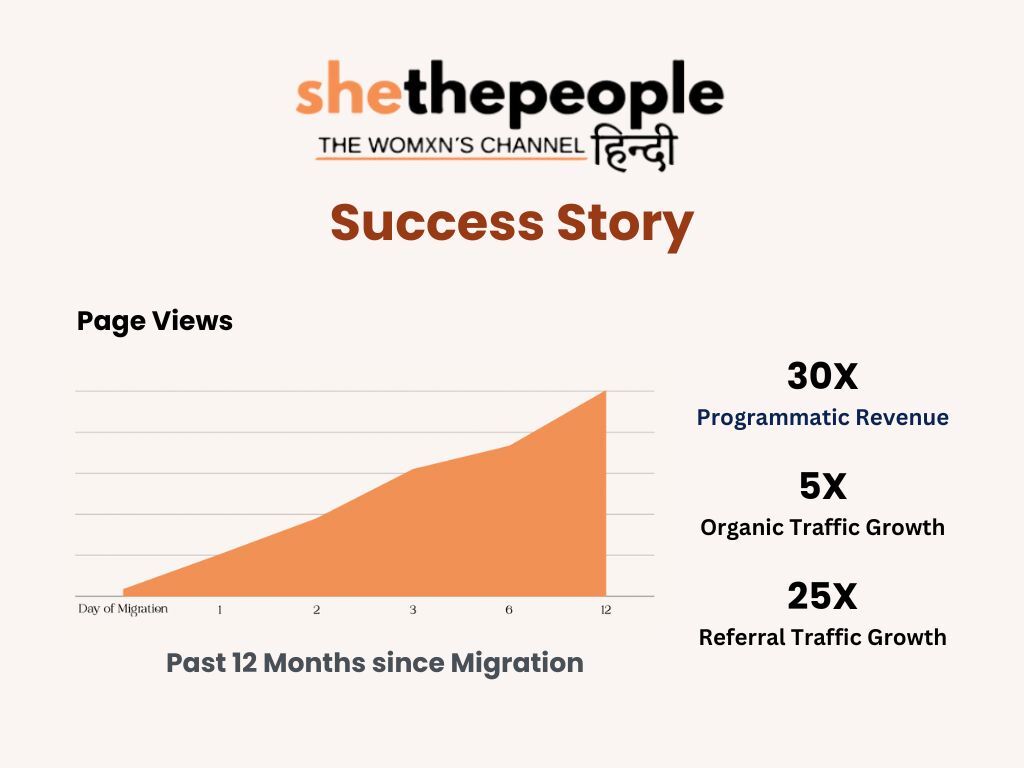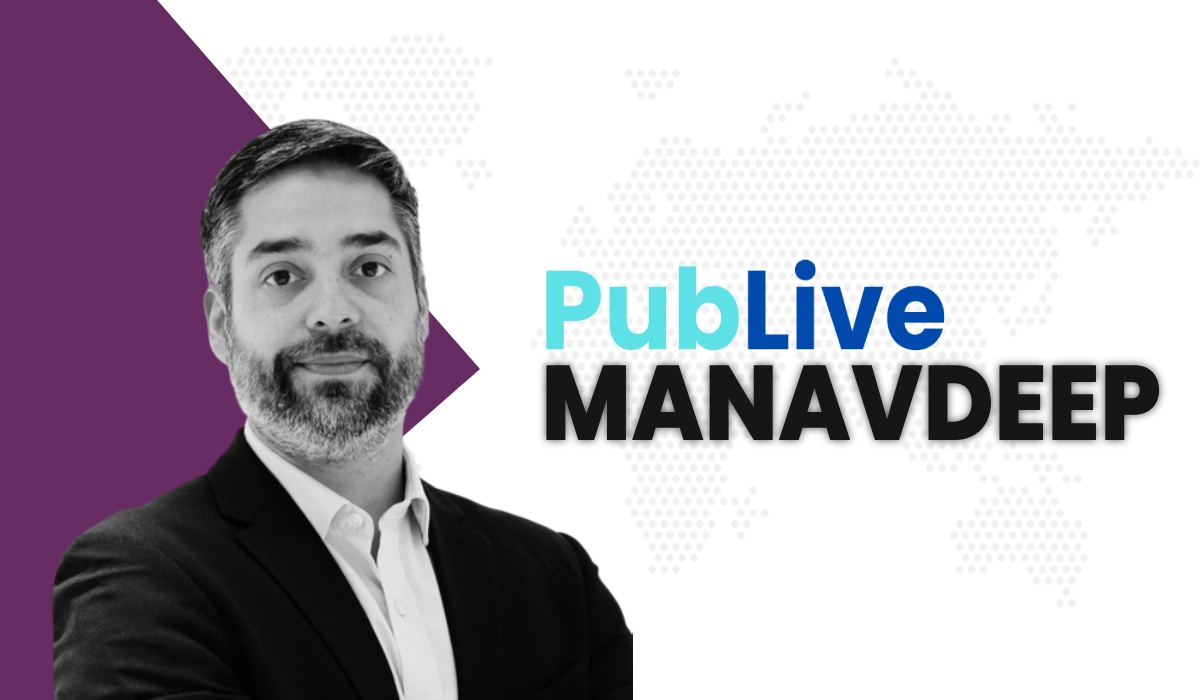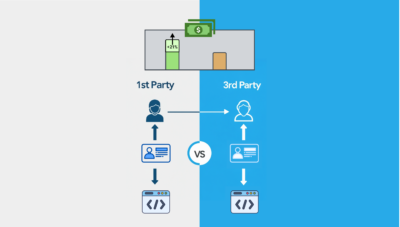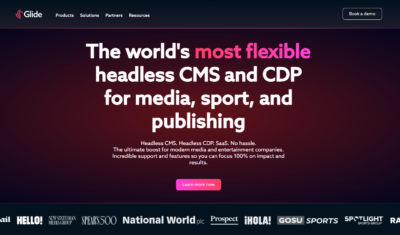Manavdeep Singh founded PubLive to provide publishers with a modern CMS designed to help them overcome more of their daily challenges.
Digital publishing is a complex endeavor characterized by diverse disciplines that players must master to taste success.
Creating great content without a fully flexible and responsive search engine optimization (SEO) strategy isn’t good enough. And nailing both of these can still fail to yield the desired results if the publisher hasn’t given much thought to their backend infrastructure or monetization strategy.
Further complicating the picture is the arrival of generative AI, which observers have claimed could sink publishers or help them swim.
While it’s never not a challenging time to be a publisher, the industry does find itself facing a unique set of challenges in the here and now. With this in mind, State of Digital Publishing (SODP) sat down to pick the brains of CMS-developer PubLive, Manavdeep Singh, to discuss how publishers can navigate these challenges.
Having worked with many publishers over the years, what are some of the most common challenges they continue to face?
I’ve worked within the media industry for more than 15 years and the thing that keeps jumping out at me is the fact that the publisher journey is generally very, very fragmented. Publishers depend heavily on multiple vendors, plugins, platforms and dashboards to operate efficiently.
The disintegration of their software solutions commonly creates profound challenges in three areas:
- User experience (UX)
- SEO
- Monetization
Publishers must worry about delivering an outstanding UX, optimizing for search engines and building revenue streams, all while successfully creating compelling content. Their focus is constantly torn in different directions.
UX is paramount. The audience has to be able to easily navigate and consume content, especially with the increasing trend of mobile consumption. Yet many publishers still need help to make their websites mobile-friendly, often struggling with Core Web Vitals (CWVs) challenges that impact website performance.
The PubLive team has worked with numerous publishers to turn failing CWV scores into pass marks, with many enjoying significant jumps in their scores after migrating to our platform. One of our publishers saw a six-fold increase in traffic from Google Discover after six months with us.
A CMS can and should be more than just a means to publish articles. It can serve as the central hub for managing many different aspects of the publishing business.
How critical is a publisher’s backend infrastructure to its SERP rankings?
Imagine a lightning-fast website that loads in a snap, providing an unparalleled user experience that meets Google’s CWVs. Your website just got a massive boost in Google’s ranking algorithms. That’s only possible with solid backend infrastructure.
Robust infrastructure helps search engine bots crawl and index content more quickly. Websites rank higher in search results when search engines can readily discover and arrange their material.
Well-tuned infrastructure may improve engagement metrics. Visitors are more likely to stay on a site for longer when it loads swiftly and the UX is smooth. Search engines recognize quality information when consumers interact more with a website.
This infrastructure plays a critical role in SEO, which is why we’re constantly tweaking and updating our platform.
One of our publishers, The DQ Week, saw some fantastic early results after migrating to us. Its CWV score significantly improved and initial server response time shrank by almost 90%, leading to better website performance.
The DQ Week additionally saw a threefold jump in “good” URLs detected by tools such as Google PageSpeed Insights, Google Search Console, etc. Last but not least, it saw a twofold jump in Valid AMP Pages, helping improve mobile friendliness and SEO visibility.
At the same time, a publisher’s CMS can provide more than just technical proficiency to boost visibility. This is why the Publive team has made it their mission to develop AI tools to help our clients stay competitive.
Everyone is talking about AI and the risks and rewards it poses to publishers. How do you think it can help publishers?
It’s important not to consider AI a potential replacement for human creativity. Instead, it can be a complementary tool that helps publishers be more efficient and reach wider audiences.
The advent of AI has opened up several opportunities for publishers to improve their content production and distribution procedures. Looking beyond the discussion over how search engines will treat AI-generated content, we can see other practical ways AI can help publishers.
- Content co-pilot: We’ve integrated AI tools that advise publishers on best SEO practices during the content creation phase. The focus here is not on using AI to create the content but on improving its SERP visibility.
- Content repurposing: Using the same content in multiple channels represents extra value for the publisher. As such, our platform provides AI tools that turn articles into Web Stories, videos for platforms such as YouTube and audio stories such as podcasts. It also allows news YouTubers to do the inverse: turn their videos into articles. Repurposing content can help publishers reach a wider audience without diluting the original work’s quality.
- Content distribution: AI-powered distribution tactics can increase content visibility. Using data gleaned from user actions and preferences, AI can help distribute content across social media channels and rewrite the content to match the medium of choice. This saves time while increasing the likelihood of wider audiences consuming the content.
There’s no denying that AI is a hot-button topic, but it’s important to remember that the tech wasn’t built to replace human ingenuity. As an auxiliary resource, though, it can help publishers save time and expand their readership.
This is an exciting subject but also one that’s stirred some controversy. Have any publishers you work with used these tools effectively without compromising results?
Absolutely. Since Tice and NewsOnFloor began using our AI-powered technology to transform their articles into web stories, they’ve seen a considerable jump in their visitor numbers. More generally, we’ve seen signs that adapted web stories are driving traffic for publishers across the board.
All of our publishers use our AI-powered content distribution feature, which allows them to more quickly and easily distribute their material across social media channels. The tool rewrites the content to meet each channel’s specs.
SheThePeople, meanwhile, is using our AI-powered tools for content repurposing and SEO and has seen an incredible jump in traffic and improved user engagement.
How can digital publishers create additional audience touchpoints beyond their website?
Modern digital publishers need to capture the attention of an increasingly fragmented audience that uses a variety of surfaces and devices to consume information.
While organic distribution is the method publishers are traditionally most comfortable with, there are several ways for them to boost their exposure. These include:
- Publisher SEO: We’ve seen our publishers frequently enjoy a decent boost in their traffic after optimizing their content to appear in Google Discover and Google News.
- Third-party aggregators: Platforms such as Flipboard and DailyHunt have helped some of our publishers increase their traffic by as much as tenfold. Although the first-mover advantage is largely gone, there’s plenty of upside left in underexplored genres.
- Content repurposing: We’ve also seen that content repurposing can help drive fivefold growth for some publishers.
- Newsletters: Sending email newsletters to subscribers can increase publisher traffic by up to 20%, depending on the initial reader base.
- Push notifications: Push notifications can also help lift a user base by around 10%.
- Social media: It’s also worth highlighting the potential of social media, which can substantially increase traffic, though this does vary significantly between publishers.
These are just some tactics digital publishers can use to boost content engagement and improve their website performance.
Advertising has traditionally been distinct and separate from publishers’ backend tech solutions. Why, then, are you offering programmatic monetization options as part of your CMS?
Today’s digital publishing world has changed how publishers handle advertising and profitability. Programmatic advertising offers higher rewards and closer ties with the advertising industry.
However, not all publishers have the capacity or knowledge to leverage it properly, and this is where our tech-enabled monetization stack comes into play.
Our programmatic monetization solution helps publishers to diversify their revenue streams and decrease dependence on one source. We recommend opening up several monetization channels because:
- Diversified sources of revenue: While more channels can mean more income, greater diversification also means reduced exposure. If one segment, be it subscriptions or affiliate revenue, underperforms, it’s worth having multiple options. We provide publishers access to programmatic and video ads, while our enterprise clients can manage direct deals. Our platform can also track advertising analytics and optimize bidding methods.
- Centralized management interface: Our CMS empowers publishers to handle content and ads from one location. This streamlines the complicated ad management process, improving efficiency.
- One-stop solution: Our platform links publishers with numerous demand partners, providing a comprehensive advertising solution. This saves time and improves ad income and impression tracking.
We’re already seeing this advertising solution having a profound impact. SheThePeople saw its programmatic revenue climb by a factor of 30 within 12 months of joining us, while display and native ad revenue increased threefold.

About Manavdeep Singh
Manavdeep Singh has 17 years of experience working in the media sector in various fields, such as adtech, media tech, marketing and revenue generation. After departing as head of sales at Moneycontrol in 2017, Manav has worked with numerous mid-sized publishers, gaining invaluable insights into their daily struggles and the obstacles hindering their growth. With this knowledge, he set up PubLive, a full-stack CMS platform focusing on improving content visibility and monetization.






